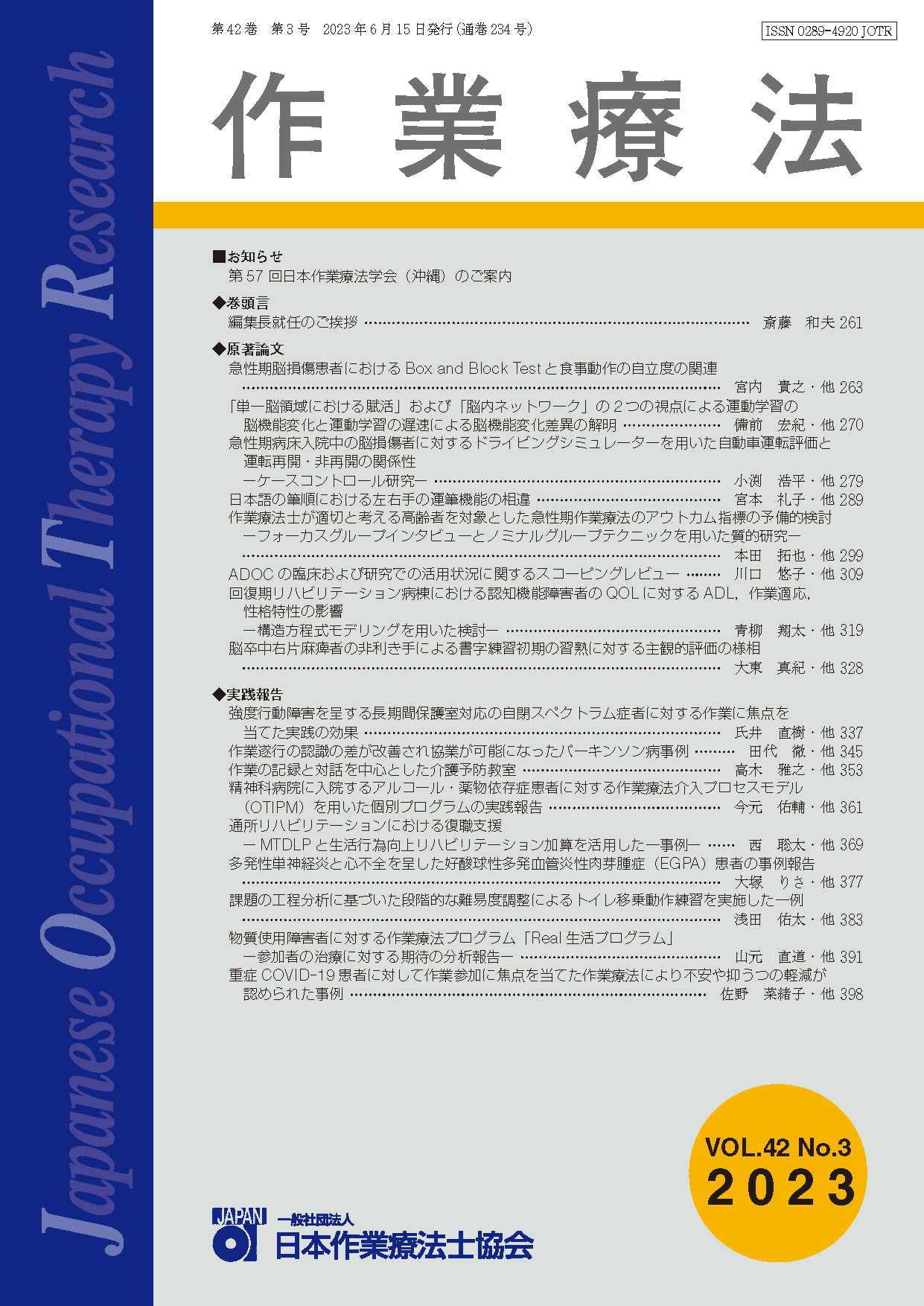Volume 42, Issue 3
Displaying 1-18 of 18 articles from this issue
- |<
- <
- 1
- >
- >|
FOREWORD
-
2023 Volume 42 Issue 3 Pages 261-
Published: June 15, 2023
Released on J-STAGE: June 15, 2023
Download PDF (573K)
ORIGINAL ARTICLES
-
2023 Volume 42 Issue 3 Pages 263-269
Published: June 15, 2023
Released on J-STAGE: June 15, 2023
Download PDF (1014K) -
2023 Volume 42 Issue 3 Pages 270-278
Published: June 15, 2023
Released on J-STAGE: June 15, 2023
Download PDF (4347K) -
2023 Volume 42 Issue 3 Pages 279-288
Published: June 15, 2023
Released on J-STAGE: June 15, 2023
Download PDF (1009K) -
2023 Volume 42 Issue 3 Pages 289-298
Published: June 15, 2023
Released on J-STAGE: June 15, 2023
Download PDF (898K) -
2023 Volume 42 Issue 3 Pages 299-308
Published: June 15, 2023
Released on J-STAGE: June 15, 2023
Download PDF (1041K) -
2023 Volume 42 Issue 3 Pages 309-318
Published: June 15, 2023
Released on J-STAGE: June 15, 2023
Download PDF (1030K) -
2023 Volume 42 Issue 3 Pages 319-327
Published: June 15, 2023
Released on J-STAGE: June 15, 2023
Download PDF (1032K) -
2023 Volume 42 Issue 3 Pages 328-336
Published: June 15, 2023
Released on J-STAGE: June 15, 2023
Download PDF (956K)
PRACTICAL REPORTS
-
2023 Volume 42 Issue 3 Pages 337-344
Published: June 15, 2023
Released on J-STAGE: June 15, 2023
Download PDF (1046K) -
2023 Volume 42 Issue 3 Pages 345-352
Published: June 15, 2023
Released on J-STAGE: June 15, 2023
Download PDF (1092K) -
2023 Volume 42 Issue 3 Pages 353-360
Published: June 15, 2023
Released on J-STAGE: June 15, 2023
Download PDF (3192K) -
2023 Volume 42 Issue 3 Pages 361-368
Published: June 15, 2023
Released on J-STAGE: June 15, 2023
Download PDF (907K) -
2023 Volume 42 Issue 3 Pages 369-376
Published: June 15, 2023
Released on J-STAGE: June 15, 2023
Download PDF (1063K) -
2023 Volume 42 Issue 3 Pages 377-382
Published: June 15, 2023
Released on J-STAGE: June 15, 2023
Download PDF (870K) -
2023 Volume 42 Issue 3 Pages 383-390
Published: June 15, 2023
Released on J-STAGE: June 15, 2023
Download PDF (1018K) -
2023 Volume 42 Issue 3 Pages 391-397
Published: June 15, 2023
Released on J-STAGE: June 15, 2023
Download PDF (1222K) -
2023 Volume 42 Issue 3 Pages 398-406
Published: June 15, 2023
Released on J-STAGE: June 15, 2023
Download PDF (1291K)
- |<
- <
- 1
- >
- >|
